Government News
First major renovation of Inner Ring Road underway 2022-08-30
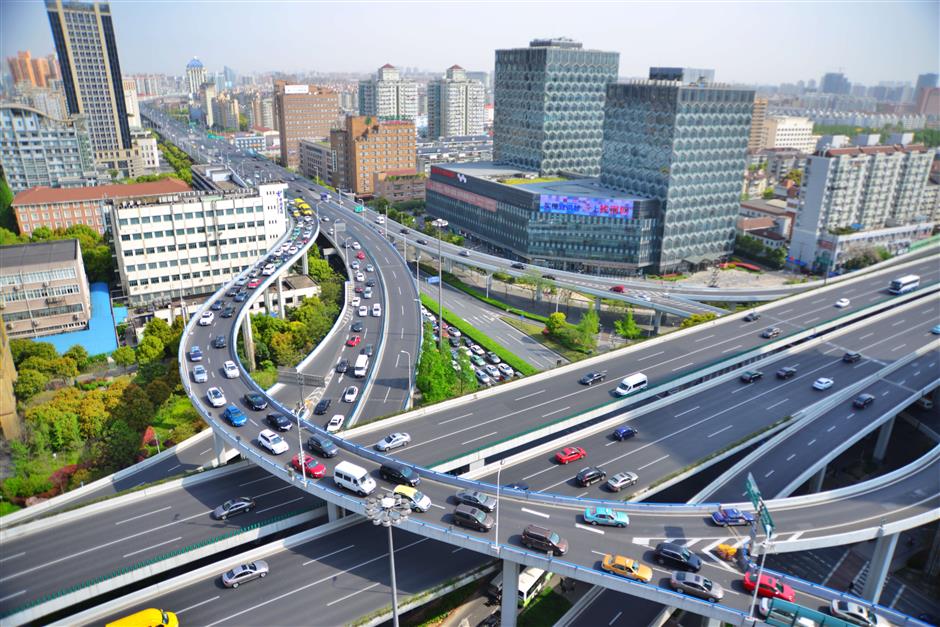
Busy traffic flow on Inner Ring Road
Great cities of the world often feature orbital motorways encircling downtown areas, such as the Berliner Ring, Amsterdam Ring and Boulevard Périphérique around Paris.
They help reduce traffic volume in urban cores and connect suburbs with efficient travel.
Shanghai is putting its name at the top of that list by launching a major facelift to Inner Ring Road, one of China's first circular highways with four or five lanes in both directions that opened in 1994, to make it "younger, smarter and faster."
The 47.7-kilometer-long circumferential highway connecting Puxi and Pudong has not only changed the traveling mode of local citizens from the ground to the overhead road but is also a dividing line for the city's housing prices – houses within Inner Ring Road are close to more convenient modes of transportation and downtown but come with higher prices.
It comprises the city's main traffic network along with three subsequent ring-shape highways – Middle Ring Road, S20 Outer Ring Road and G1503 Suburban Ring Road.
The renovation project began August 25 on a section between Siping and Zhengben Roads in Yangpu District, which requires major maintenance, according to the city's road transport authority.
It is a trial project for a complete facelift of the ring highway and a demonstration for ensuing renovations of its old infrastructure facilities.
"Upon completion of the renovation, the highway will become safer and more reliable, highly efficient, more intelligent and environmentally friendly," said Qian Guohui, director of the Shanghai Road Transport Development Center. "The road has become a lasting memory for local citizens, and it will serve several future generations after this renovation."
In recent years, the surging number of cars has damaged bridge structures and put great pressure on its maintenance.
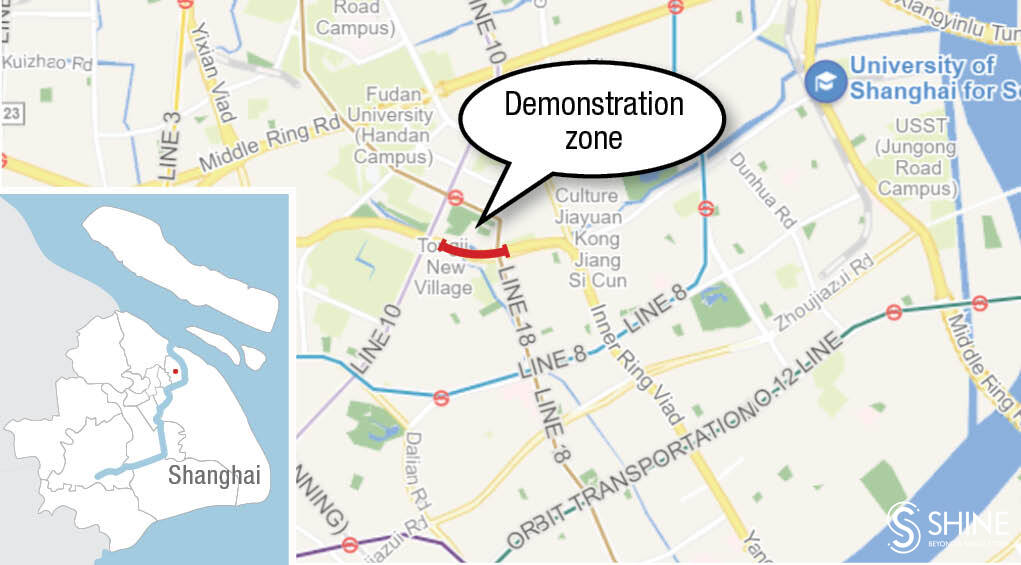
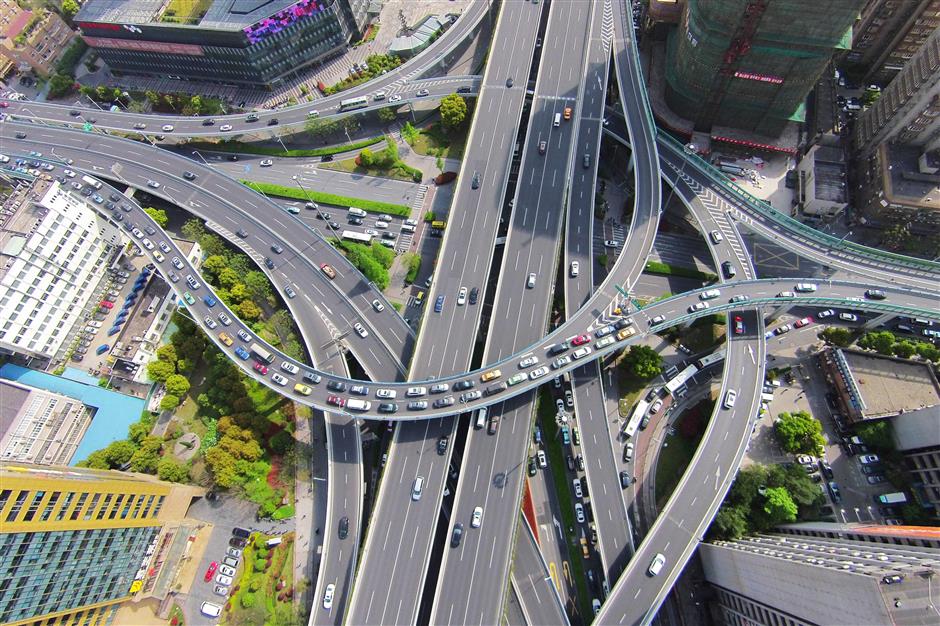
Intertwining decks on Inner Ring Road
During the two-month renovation, bridge structures will be reinforced and cracks will be fixed. Ancillary facilities, such as crash and sound-proof barriers as well as antiglare shields, will be upgraded with cutting-edge technologies.
Smart sensors will be installed to monitor the highway's "health" and detect overweight trucks. Greenery and pot flowers along the motorway will watered by an automated irrigation system.
In a partnership between the transport development center and Yangpu District government, the space beneath the elevated highway will be redeveloped into pocket parks, public spaces or sports facilities. As a result, the elevated road will be integrated more harmoniously into the surroundings, Qian said.
Innovative equipment and measures will be applied to reduce noise and the impact to nearby residents during the renovation. An ultra-high pressure water jet robot, for instance, will be used to refurbish the road more efficiently, and new barriers will be prefabricated rather than installed piece by piece.
To reduce the impact on traffic, maintenance will be carried out on alternate lanes primarily between midnight and 6am, during which time vehicles will have to use surface streets.
"Since the renovation begins after 11pm, it will cause no congestion on nearby roads," said Zhou Xiaopeng, a senior traffic police officer.
Part of the old road surface was worked on over the weekend with no impact on traffic, said Shen Guoyu, a technical supervisor with the Shanghai Tunnel Engineering Co Road and Bridge Group, which oversees the renovation project.
In the next phase, old boundary beams will be cut off for maintenance and soundproof barriers will be replaced, Shen said.
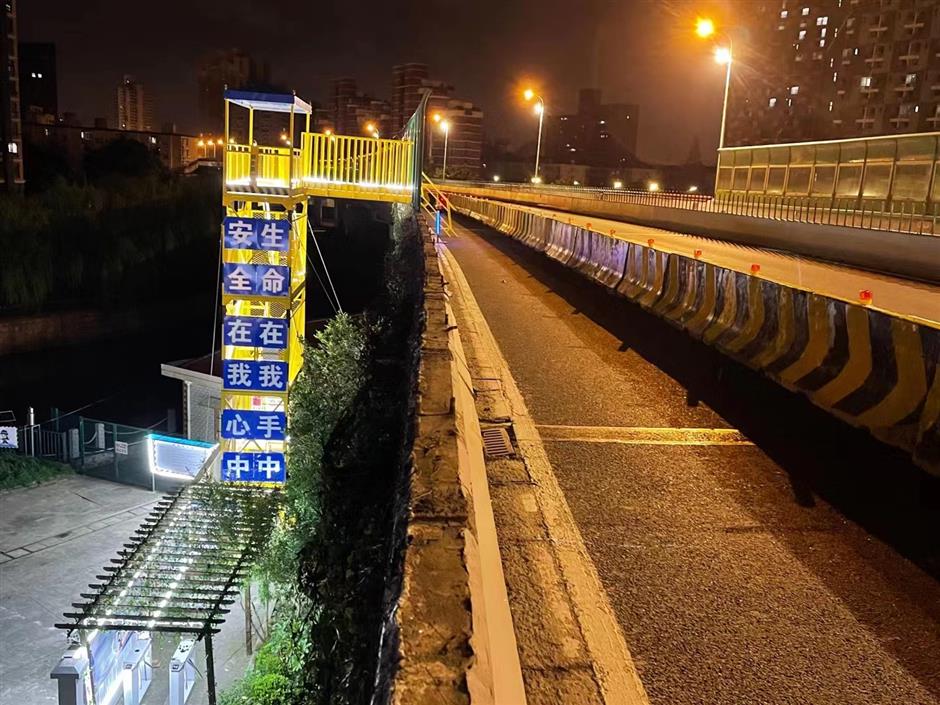
Soundproof barriers are dismantled on a section of Inner Ring Road during the renovation project.
The loop highway was built based on Zhongshan Ring Road, a cinder road built around the city's foreign concessions in 1927.
Former Chinese Premier Zhu Rongji, then mayor of Shanghai, noted in 1990 that two cross-river bridges (Nanpu and Yangpu Bridges) were insufficient for Shanghai, which needed a ring beltline to connect Puxi and Pudong.
Before the opening of the Pudong section of the ring road, ferries were the most common way to get across the Huangpu River.
Construction began on the ring road in 1993 and was at the top of the city government's agenda to facilitate rapid urban development and relieve major traffic jams in the downtown area.
The project was the first Chinese urban transport project financed by loans from the World Bank.
"The Inner Ring Road has played a crucial role in the development of Pudong," said Pan Ahu, a researcher and writer with the Pudong New Area Archives. "The ring road has also effectively prevented traffic congestion in downtown areas by distributing a large among of vehicles."
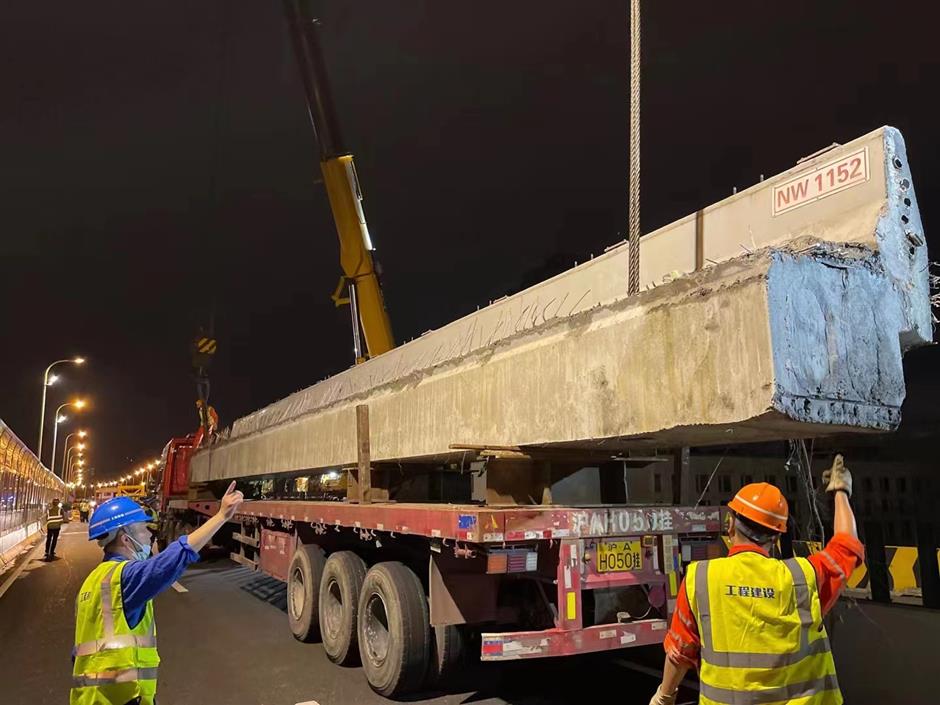
Workers dismantle a concrete beam for maintenance.
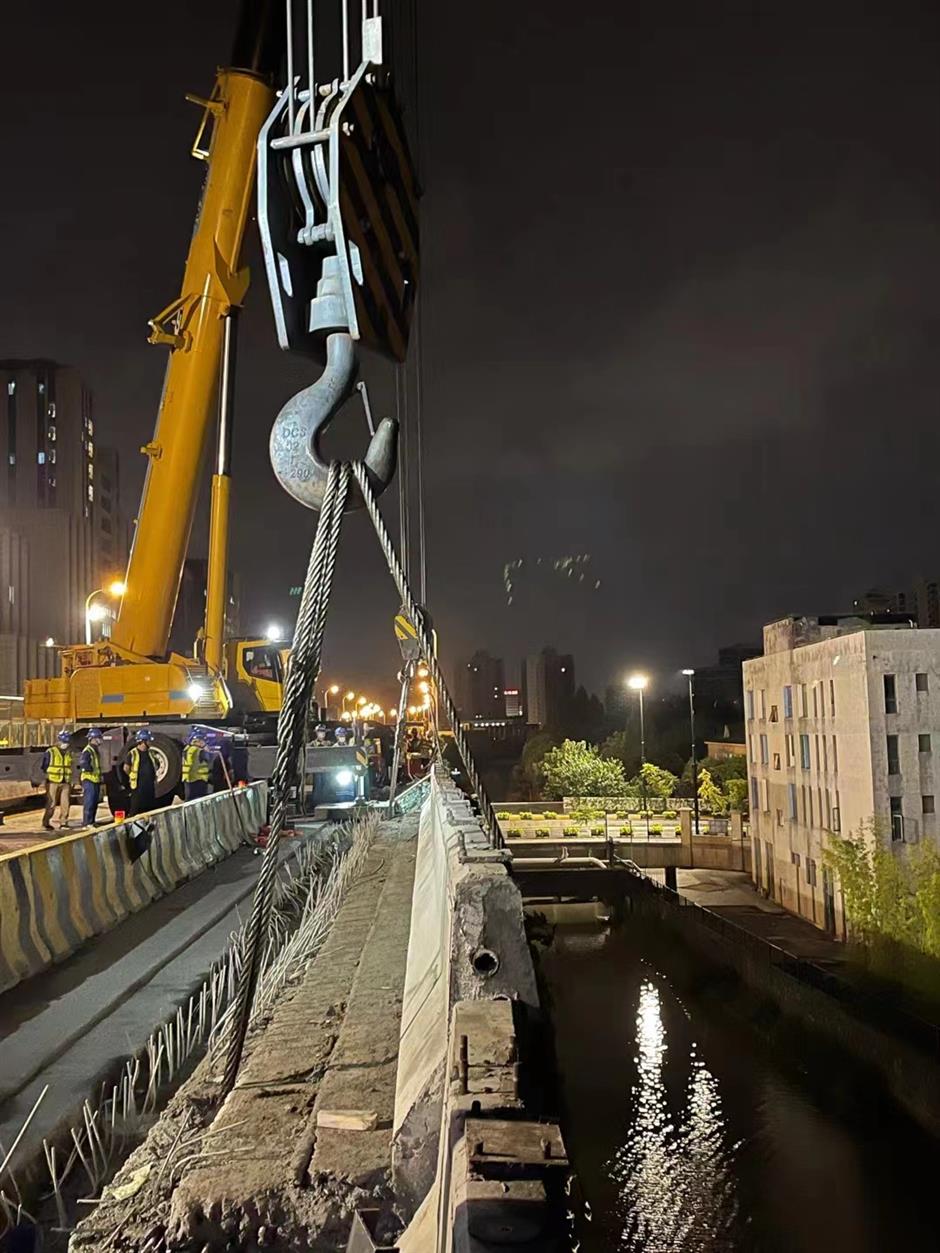
Work for the renovation project is done primarily at night.
Source: Shanghai Daily
Application Status
| 04-16 | 21315227 | Processing |
| 03-12 | 21315226 | Processing |
| 09-26 | 21315225 | Processing |
Inquiry Status
| 02-29 | 02131558 | Received |
| 03-06 | 02131557 | Received |
| 11-14 | 02131556 | Received |
FAQ
Q: Q: Is there a place where I can get...
A: A: Log on to http://touch.shio.gov....
A: A: Log on to http://touch.shio.gov....
Q: Q: What is the easiest way to set u...
A: A: 1. Log on to http://touch.shio.g...
A: A: 1. Log on to http://touch.shio.g...
Q: Where can I get an English map of S...
A: English maps of Shanghai are availa...
A: English maps of Shanghai are availa...

